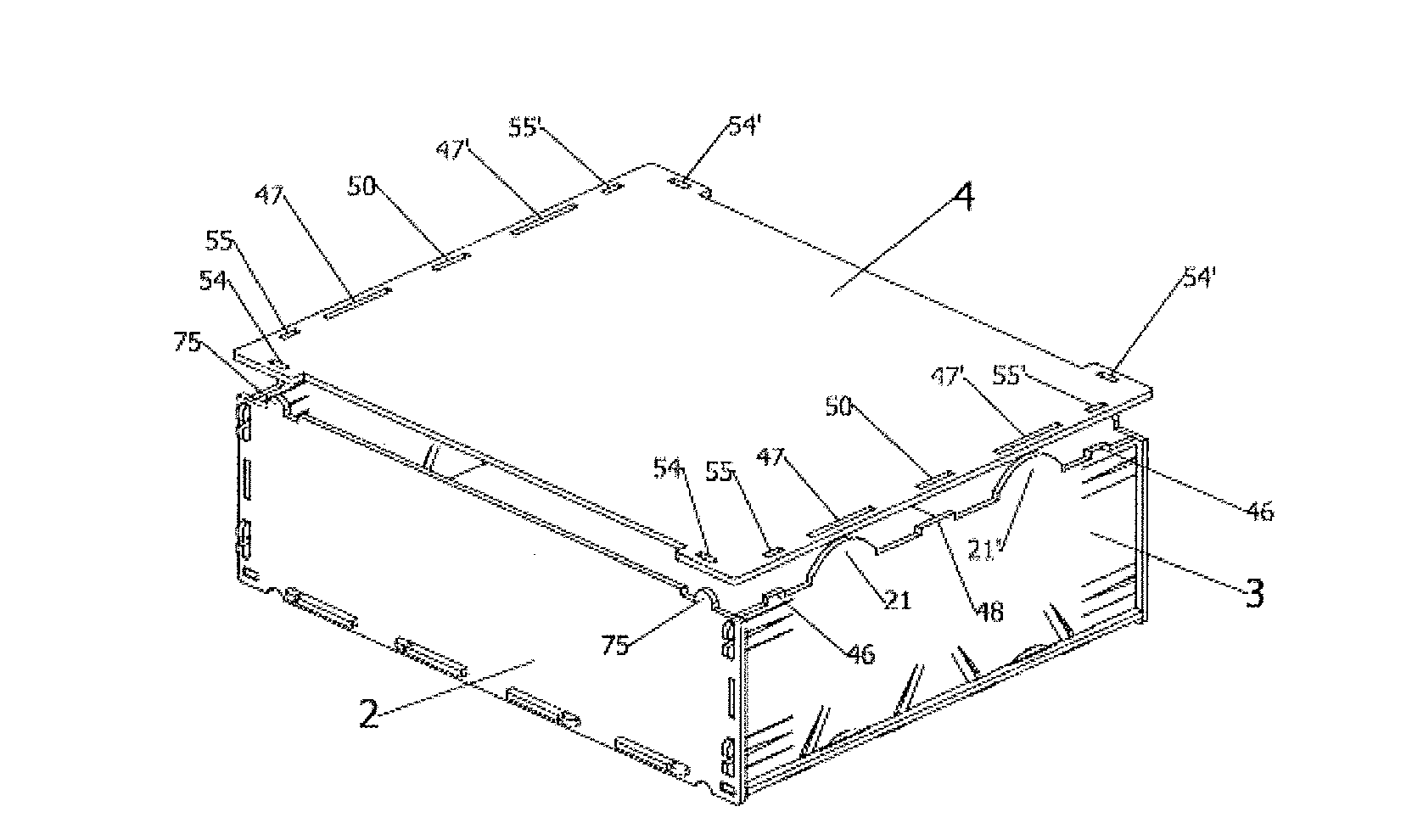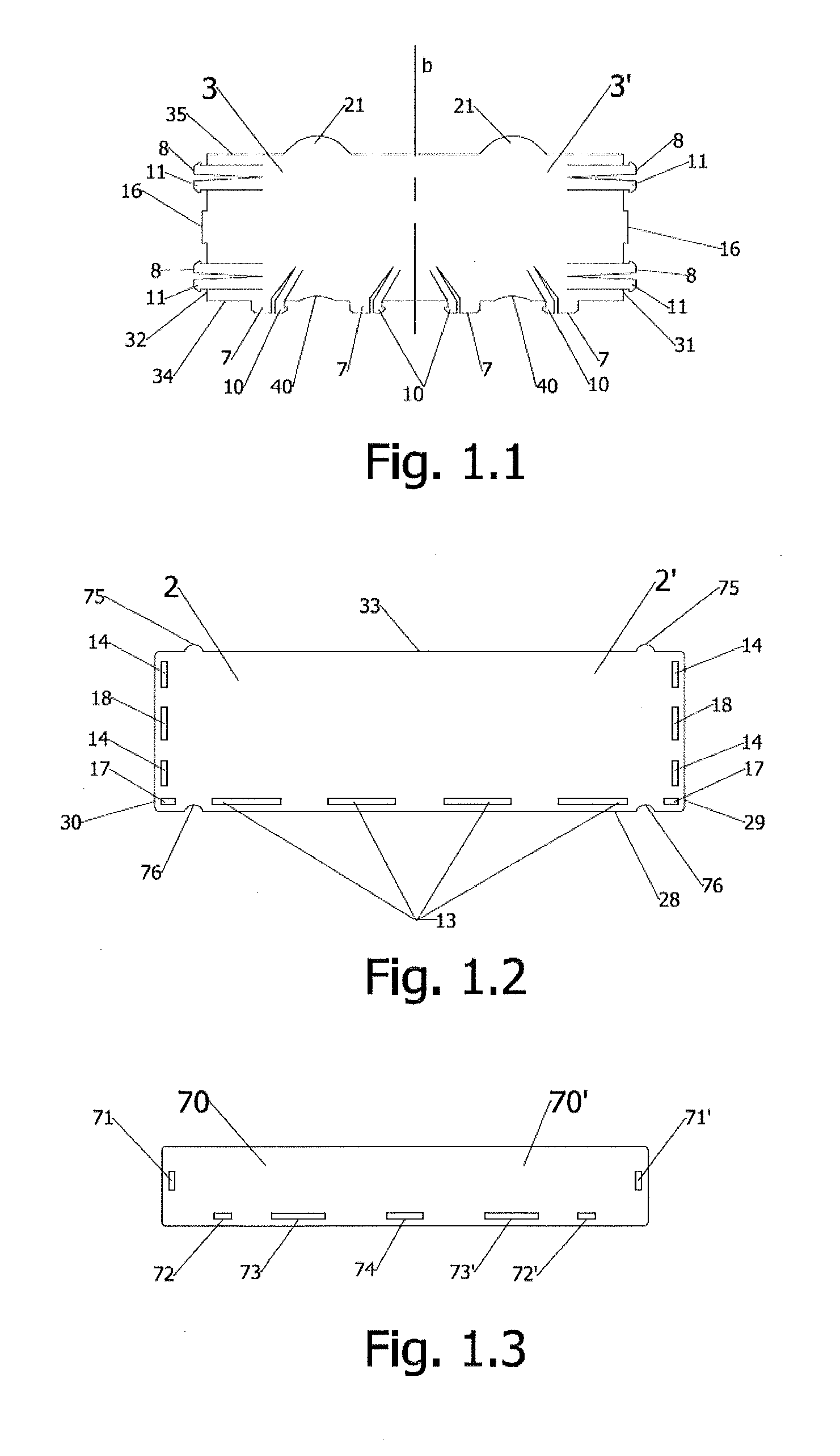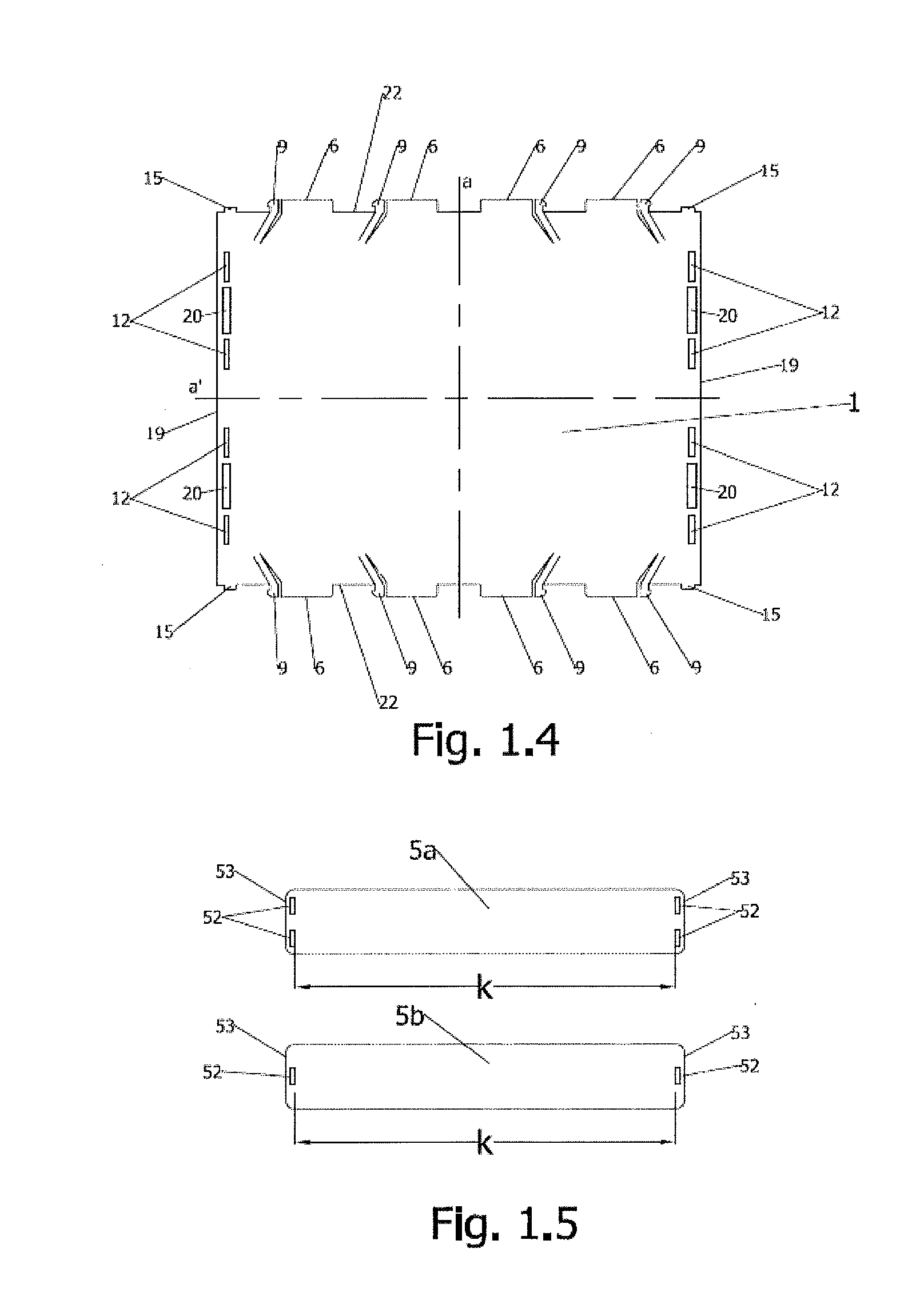Self-assemblable container for generic use and manufacturing method thereof
a self-assembly and container technology, applied in the direction of rigid containers, paper/cardboard containers, containers, etc., can solve the problems of loss of structural strength in the presence of humidity, inability to seal the perimetrical edges or faces, and weakening at the same time its structure, so as to ensure structural stability to the arrangement, prevent the displacement of the container parts assembled, and prevent the effect of disassembly
- Summary
- Abstract
- Description
- Claims
- Application Information
AI Technical Summary
Benefits of technology
Problems solved by technology
Method used
Image
Examples
Embodiment Construction
[0115]The self-assemblable container for generic use, preferably manufactured exclusively from ecologic, renewable and biodegradable materials of the present invention, as it shall be explained in the present document, solves at least in part the previously mentioned problems.
[0116]As the container's structural elements are obtained by a laser cutting method, their perimetrical faces are perfectly sealed and cauterized, thus avoiding moisture penetration though the edges to the core of the same.
[0117]The main independent structural elements for the construction of this container, as described in FIGS. 1.4 through 1.6, are a bottom (1), two larger or longitudinal sides (2)(2′) and two smaller or transverse sides (3)(3′) In addition, and as it shall be explained below, in certain preferred embodiments it may be provided on top with a possible lid (4), a possible antisagging transverse brace (5a)(5b) with two geometric configurations and / or two transverse laths (70)(70′), the installat...
PUM
| Property | Measurement | Unit |
|---|---|---|
| Temperature | aaaaa | aaaaa |
| Pressure | aaaaa | aaaaa |
| Electrical resistance | aaaaa | aaaaa |
Abstract
Description
Claims
Application Information
 Login to View More
Login to View More - R&D
- Intellectual Property
- Life Sciences
- Materials
- Tech Scout
- Unparalleled Data Quality
- Higher Quality Content
- 60% Fewer Hallucinations
Browse by: Latest US Patents, China's latest patents, Technical Efficacy Thesaurus, Application Domain, Technology Topic, Popular Technical Reports.
© 2025 PatSnap. All rights reserved.Legal|Privacy policy|Modern Slavery Act Transparency Statement|Sitemap|About US| Contact US: help@patsnap.com



